Realizing Children’s Rights in Haiti
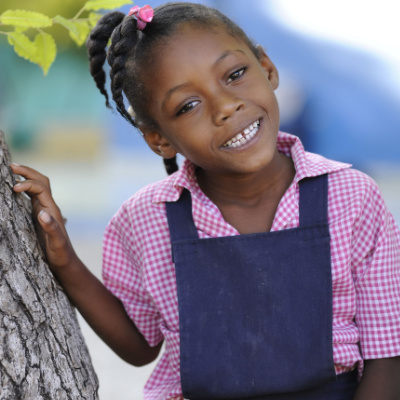
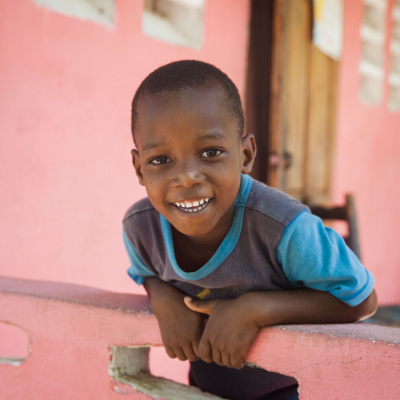
With a significant portion of the country’s population remaining in poverty, Haiti is one of the poorest countries in the world. Poverty, coupled with environmental challenges such as earthquakes remain key drivers for children’s rights-centric challenges depriving them of access to adequate health and sanitation, increasing their risk of child trafficking, and sexual and gender-based violence and pushing them towards illicit and dangerous forms of child labour. These complex issues prevent Haitian children from realizing their fundamental human rights.

Children’s Rights Index: 6,17/10
Red level: Difficult situation
Population: 11.4 million
Population ages 0-14: 32%
Life expectancy: 64 years
Under-5 mortality rate: 61‰
Haiti at a glance
The Republic of Haiti (Ayti, République d’Haïti, Repiblik Dayti), occupies the western third of Hispaniola, which is the second-largest island in the Caribbean Sea. To the east, Haiti shares a border with the Dominican Republic, to the south and west with the Caribbean and to the north with the Atlantic Ocean. Jamaica is 120 miles (190 kilometres) to the west of the southern peninsula, Cuba 50 miles (80 kilometres) west of the northern peninsula and the Bahamas 70 miles (110 kilometres) to the north (Lawless, n.d).
In the local Taino language, Haiti, meaning “high land”, is a mountainous country with about two-thirds of the land area 1,600 feet (490 meters) in elevation. The four main mountain ranges of the Hispaniola from the west of Haiti to the east, are the Cordillera Septentrional, Massif du Nord (Northern Massif), Matheux Mountains (Chaîne des Matheux) and the Trou d’Eau Mountains (Chaîne du Trou d’Eau) (Lawless, n.d). Haiti has two distinct peninsulas, the northern and southern, which are separated by the Golfe de la Gonave (World Vision, 2010).
Haiti is prone to seismic earthquakes, and in January 2010, a catastrophic earthquake in Port-au-Prince caused severe damage destroying homes and infrastructure, killing more than 300,000 people (World Vision, 2010). Again, in August 2021, a 7.2 magnitude earthquake struck the southwestern part of Haiti killing more than 2,200 people and leaving 12,200 people injured. Although this earthquake was not as destructive as the one that struck in 2010, it still had devastating impacts, affecting 800,000 people, of which 650,000 people are currently in need of humanitarian assistance (UNFPA, 2021).
Most Haitians are of West African descent, mostly speaking Creole, a blend of French and African languages. Before the arrival of Christopher Columbus in 1492, the Taino and Arawak people lived on the island. In the 1600s, the French invaded the western part of Haiti. In 1791, inspired by the French revolution the Haitians drove the French out. Haiti became the first slave colony to gain independence in 1804 (World Vision, 2010).
For nearly 30 years, from 1957, under the rule of Dr. François Duvalier, Haiti experienced dictatorship. In 1990, Roman-Catholic priest, Father Jean-Bertrand Aristide became the first democratically elected president. Since his election, Haiti has been politically unstable, being marked by economic problems and violence, which has left it to become the poorest country in the Western Hemisphere (World Vision, 2010).
Status of children’s rights [1]
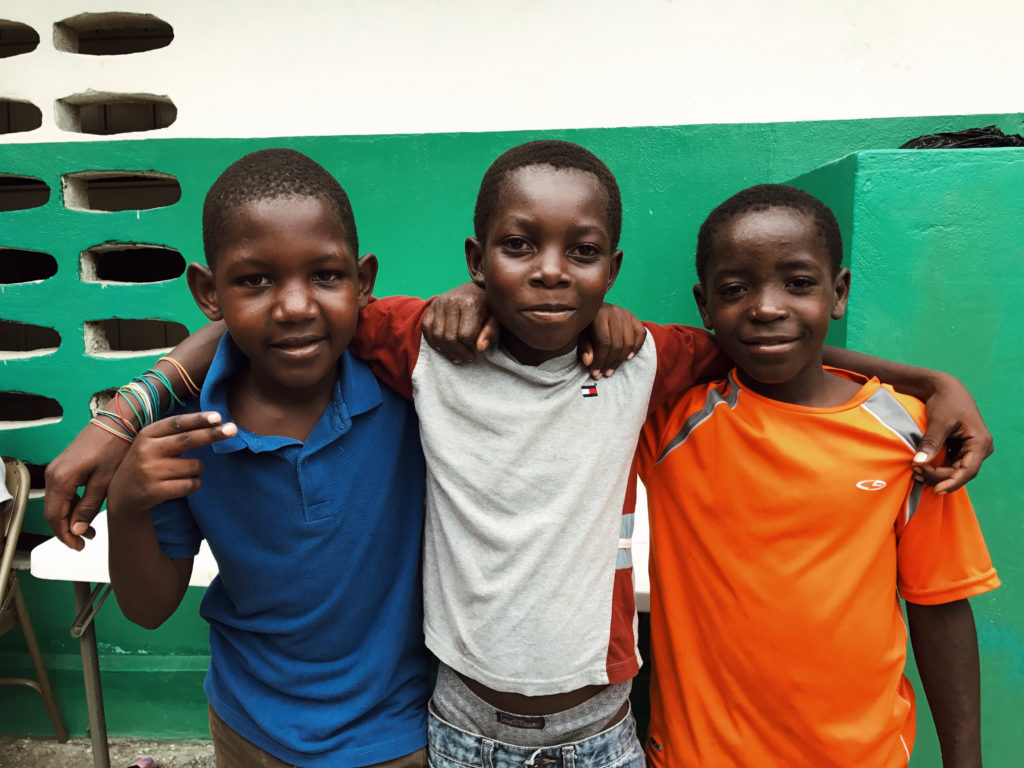
Haiti has committed to several international instruments for the protection of children’s rights. In 1995, the government ratified the Convention on the Rights of the Child (CRC). Haiti is also a party to other international human rights instruments such as the International Covenant on Civil and Political Rights ratified in 1991 and 1981 the Convention on the Elimination of All Forms of Discrimination Against Women. Haiti is not a party to the Optional Protocol to the Convention on the Rights of the Child on the involvement of children in armed conflict but ratified the Optional Protocol to the Convention on the Rights of the Child on the sale of children, child prostitution and child pornography in 2014.
Regionally, Haiti is a member of the Organization of American States (OAS) and is bound by the Inter-American System of Human Rights. In 1997, Haiti ratified the Inter-American Convention on the Prevention, Punishment and Eradication of Violence against Women (known as the Belém do Pará Convention). In 2013, as a member of the UN Economic Commission for Latin America and the Caribbean (ELAC), Haiti adopted the Montevideo Consensus on Population and Development.
Addressing the needs of children
Right to education
Article 32-1 of the Haitian Constitution enforces the right to free education and Article 32-3 declares that primary schooling is compulsory (Solino, 2011). In 2011, the government introduced a universal, free and compulsory education programme. Through this, the government’s main aim was to ensure that there was an increase in the number of children who attend school and that disadvantaged children, particularly in rural areas, had access to free education at the primary and secondary levels (CRIN, 2016).
The government also established the National School Cafeteria Programme which allows each child that is enrolled in full-time education to access one hot meal a day. The motivation behind this was to reduce the school dropout rates. This coupled with the free school transport system aims to make it easier for children to access education (CRIN, 2016).
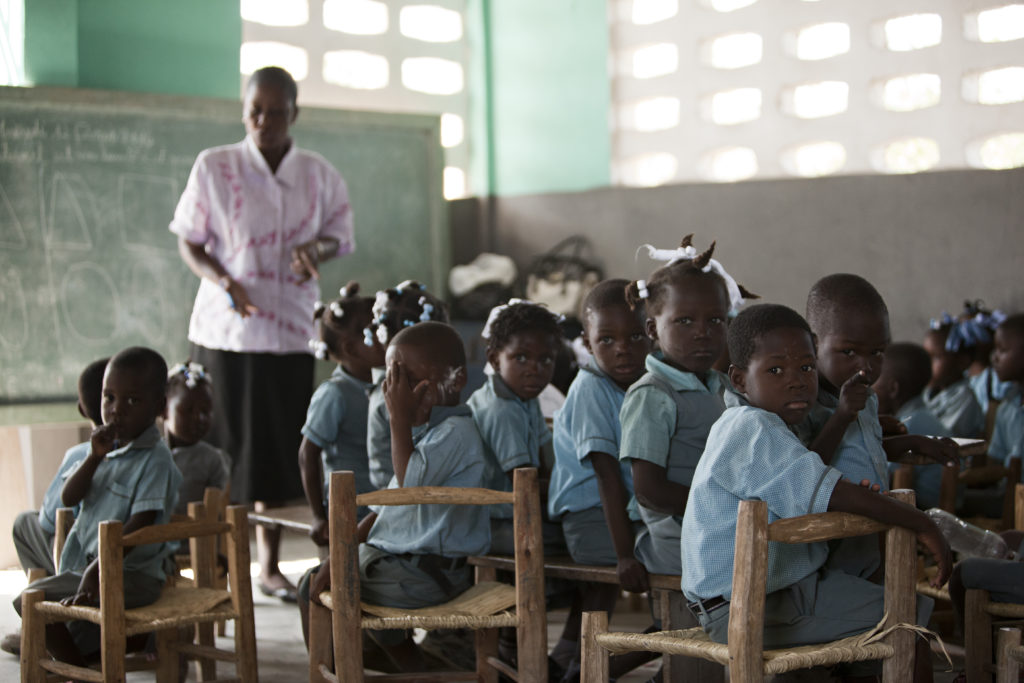
Despite education being free since 2011, there are other significant barriers to accessing education. Due to economic constraints, public schools are overcrowded and lack essential educational facilities, libraries, hygiene and sanitation services and teachers. Many teachers lack official teaching qualifications and very few are adequately trained. Several schools also lack adequate sanitation facilities which further limits girls’ attendance and access to education, particularly those who have reached puberty (Solino, 2011).
Approximately, 90% of schools in Haiti are private schools which charge tuition fees, amongst other fees that make it inaccessible to the majority of the population. Additionally, birth registration rates in Haiti remain low, leaving unregistered children unable to access social services such as education (US Department of Labour, 2020).
Another barrier to accessing education is language. Children living in disadvantaged communities are unable to attend school because classes are often taught in French, rather than in Haitian Creole. Although French and Haitian Creole are both official languages, French is only spoken by 20%-40% of the Haitian population (Solino, 2011).
Right to health
Over the past few decades, Haiti has suffered multiple developmental setbacks which have impacted its health care system (Dev et al, 2022). Overseen by the Ministry of Health and Population, and Department of Family Health, the maternal and neo-natal health care system in Haiti is three-tiered, designed to improve primary care access at the community level.
Primary care, tier one, is divided into three levels: (1) dispensaries that provide essential medicine, screening for risk factors during pregnancy and newborn vaccinations, (2) health centres that provide basic and primary health care, HIV testing and treatment, vaginal deliveries and follow-up care for newborn children, (3) community reference hospitals that offer basic inpatient clinical services.
Secondary care, tier two, includes departmental hospitals which provide caesarean sections and management of newborn referral cases. Tertiary care, tier three, includes specialized national institutions and academic hospitals which provide maternal and newborn care (Dev et al, 2022).
The maternal and infant mortality rates in Haiti remain some of the highest in the Latin American and Caribbean region, and availability of adequate maternal, neonatal and child care remains scarce (UNICEF, 2020). In 2019, of the 16,427 infants who died before their first birthday, 60% died within their first 28 days of life. These alarming figures are attributed to a lack of appropriate prenatal care, untreated infections, high rates of eclampsia, and low-quality obstetric care. In rural parts of Haiti, hospitals and clinics lack the infrastructure, equipment, capacity and supplies to implement up-to-date guidelines and protocols (Dev et al, 2022).
The number of children suffering from acute malnutrition in Haiti is on the rise, with 134,000 children in 2019 to 167,000 children in 2020. One out of four children suffers from chronic malnutrition and two out of three children suffer from anaemia (UNICEF, 2020). UNICEF predicted that in 2021, over 86,000 Haitian children under the age of five are projected to suffer from severe acute malnutrition, in comparison to 41,000 children in 2020. This number is expected to rise due to the COVID-19 pandemic, gang violence, extreme weather conditions exacerbated by climate change, and lack of access to clean drinking water, sanitation and nutrition services (UNICEF, 2021).
Right to clean water and sanitation
In Haiti, one out of four people have no access to improved water sources; one in three households have access to adequate hand washing facilities and one in four households still practice open defecation (UNICEF, 2020). According to data collected in 2019, 35% of the Haitian population lacked access to safe drinking water (Root, 2021).
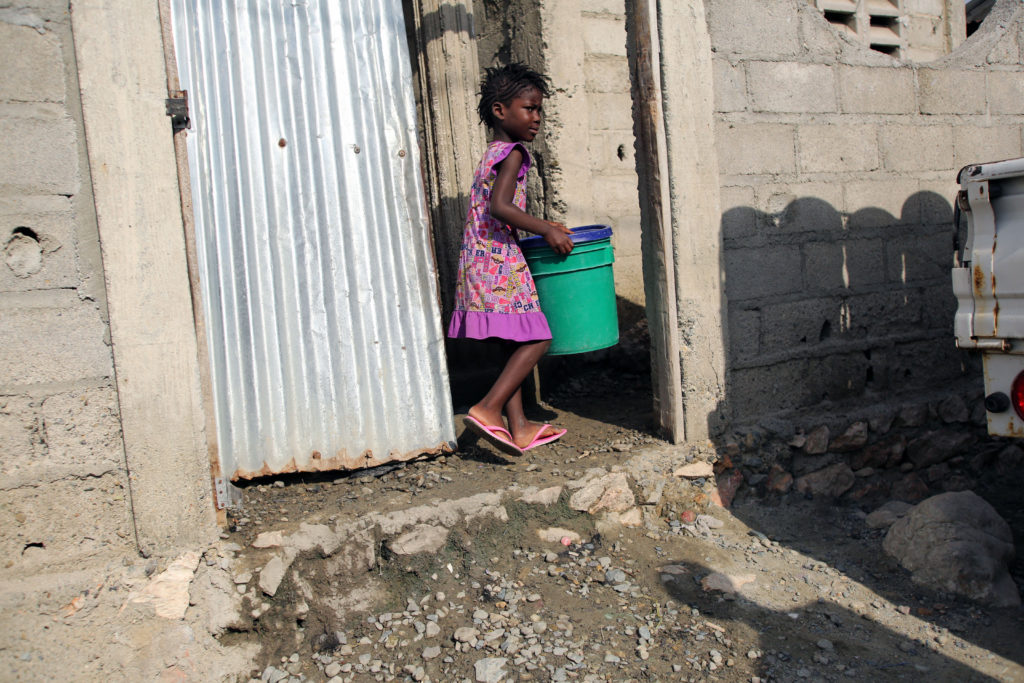
Due to climate-related emergencies, people living in vulnerable communities in Haiti are prone to acute waterborne diseases, and the destruction and damage to the water supply (UNICEF, 2020). Since the outbreak of Cholera in 2010, it has killed approximately 9,000 Haitians and infected 732,000 (Moloney, 2015). Coupled with open defecation, cases of Cholera often increase during the rainy season, from September to November (Moloney, 2015).
Since the outbreak of the COVID-19 pandemic, the World Bank has supported Haiti’s National Directorate of Water Supply and Sanitation (DINEPA) in the establishment of the Sustainable Rural and Small Towns Water and Sanitation Project. This project aims to improve hand-washing facilities, and promote good hand-washing behaviour and hygiene (World Bank, 2020). Similarly, in partnership with UNICEF in 2020, the World Bank was able to install 390 hand washing stations across three vulnerable communities which allowed 68,000 people to access sanitation facilities and 9,250 people benefitted from clean drinking water (World Bank, 2020).
Right to identity
In Haiti, the certificat de naissance (birth registration document) is issued by the hospital where the child is born but this is not used as a valid identification document without the validation of the acte de naissance, (birth certificate), which is issued by one of the bureaux locaux d’état civil (local registry offices). Applicants, typically the mother or father (or both) of the child, appear before the local registry office and provide the office with the certificat de naissance, a marriage certificate (if the parents are married) and a written statement.
The acte de naissance is then registered by the registry officer in writing and states that the child is legitimate. If a child is not born in a hospital, the acte de naissance requires two written witness statements before the registry office (Immigration and Refugee Board of Canada, 2007).
In November 2012, the National Registry Office undertook the process to modernise the civil registry system in Haiti, aiming to improve the process of issuing national identity cards and ensuring that citizens are registered at birth. Further to this, in partnership with the Ministry of National Education and Vocational Training and the Ministry of Social Affairs and Labour, ensure that school children are provided with national identity cards (CRIN, 2016).
Risk factors → Country-specific challenges
Child labour
Haiti has ratified all the key international conventions concerning child labour such as the International Labour Organization (ILO) Minimum Age Convention, 1973 (No. 138); Worst Forms of Child Labour Convention, 1999 (No. 182); the UN CRC, Palermo Protocol on Trafficking in Persons, the UN CRC Optional Protocol on the Sale of Children, Child Prostitution and Child Pornography and the UN CRC Optional Protocol on Armed Conflict.
However, despite the establishment of laws and regulations to protect children from child labour, gaps still exist and children in Haiti are subjected to the worst forms of child labour, including commercial child sexual exploitation and child trafficking. Haiti is a destination country for child sex tourism, predominantly for tourists coming from Canada, and the United States (US Department of Labour, 2020).
Haiti is a known destination for child sex tourism, and often children are forced into commercial or transactional sex in order to fund basic needs such as school-related expenses. These children are vulnerable to abuse, sexual exploitation and pornography at the hands of criminal gangs (US Department of Labour, 2021).
Child trafficking
A majority of child trafficking cases in Haiti involve children subjected to forced labour as domestic workers. Restavék, is a commonly used term to refer to children who are often physically abused, sexually exploited and uncompensated for their services. Traffickers often use sports, church or family networks to locate and traffic children from poor families to transport them to families that require their services in the form of indentured servitude.
Due to the harsh treatment and living conditions, these children often flee and end up living on the street which further places them at risk of being trafficked. Haitian children are not only trafficked internally, but also along the Haitian-Dominican Republic border, the United States, and other Caribbean countries (US Department of Labour, 2020).
More recently, a Save the Children report expressed concern that after the August 2021 earthquake, children who had lost their parents (or primary carers) would be at a heightened risk of child trafficking and commercial sexual exploitation. It was estimated that this quake left 48 children’s homes (30%, housing 1,700 children) in south Haiti damaged, further pushing these children to live living on the streets (Save the Children, 2021).
Poverty
For families living in poverty, it is not uncommon, especially after the 2010 earthquake, for parents to send their children to live in residential care centres or with other families, who are expected to provide the children with food, shelter and education in exchange for domestic labour (US Department of Labour, 2020). In 2018, the government estimated that there were at least 30,000 children living in orphanages in Haiti and 80% of these children had at least one living parent (Cohen, 2018). Although these children receive education, shelter and food, it is used as a disguise to exploit and abuse vulnerable children for cheap labour (US Department of Labour, 2020).
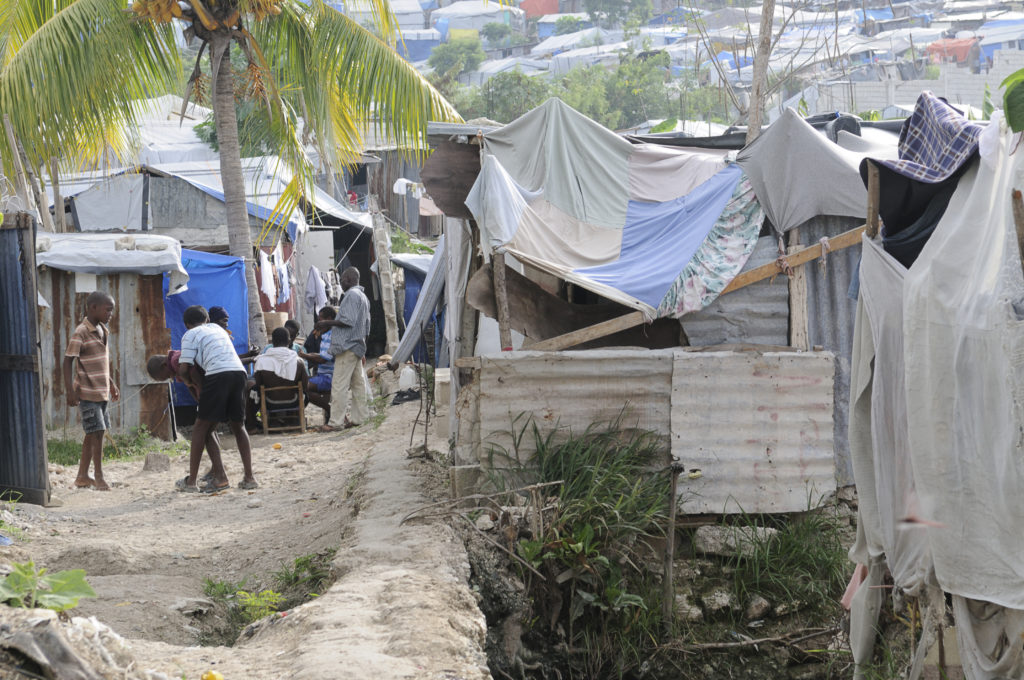
Haiti has over 750 orphanages that are home to more than 25,000 children who are vulnerable to trafficking and child labour. Out of the 750 orphanages in the country, only 105 are officially licensed. According to the Ministry of Social Affairs and Labour, a large majority of Haiti’s orphanages do not comply with government childcare standards, and this is evidenced in some children living in orphanages engaging in domestic labour and being prevented from attending full-time education (US Department of Labour, 2020).
A 2017 Lumos report revealed that orphanages in Haiti were receiving an estimated $100 million USD a year in donations from church groups and non-profits, a majority of which were based in the United States. This report further revealed that this money rarely reaches the vulnerable children for whom it is intended. These orphanages are used as a disguise for traffickers to make money on the most vulnerable in their communities (Cohen, 2018).
Violence against children
Despite ratifying the UN CRC in 1994, Haiti is yet to adopt a child protection code. In Haiti, 85% of children are exposed to violent acts, one in four girls and one in five boys are affected by sexual violence. Children are vulnerable to gang violence but also to perpetrating violence and recruitment into gangs.
Approximately, one in five children does not live with a parent, while 207,000 children live in unacceptable conditions and are vulnerable to domestic labour. Furthermore, an estimated 10% are moving across the Haitian-Dominican Republic border (UNICEF, 2020).
Prior to the earthquake, rates of violence against girls were high, but the devastating impacts of the earthquake have further exposed and exacerbated the situation of thousands of girls who are left vulnerable to living on the street, in need of water, food, shelter, and basic health care services. Girls living in the southern province of Haiti, particularly in Les Cayes are more prone to gender-based violence and sexual exploitation (Save the Children, 2021).
Sexual and gender-based violence
In Haiti, sexual and gender-based violence (SGBV) is considered a significant public health concern. Women and girls, especially those living in Port-au-Prince face an alarmingly high rate of SGBV. In May 2015, the Pran Men’m clinic (Creole for “take my hand”), was established by Doctors Without Borders/Médecins Sans Frontières (MSF). This clinic provided specialized medical and psychological care to victims of SGBV (Médecins Sans Frontières, 2017).
A 2017 Médecins Sans Frontières report shed light on this magnitude of violence experienced by women and girls in Haiti. This report revealed that from May 2015 to March 2017, 77% of the victims treated by MSF were below the age of 25, 53% of them below the age of 18 and 11% of victims knew their attackers. Of children below the age of 10, 71% were abused in places that were familiar to them such as their homes, a friend’s or relatives’ house (MSF, 2017).
During the period between May 2015 and March 2017, 83% of patients seen by MSF were rape survivors. SGBV has significant physical and psychological consequences and is the cause of an increase in HIV transmission, among other sexually transmitted infections, unwanted adolescent pregnancies, and physical injuries such as fractures, stabbing, lacerations, bleeding and infection (MSF, 2017).
Gang violence
In Haiti, gang-related violence has pushed 500,000 children away from education. Across Port-au-Prince, the capital, almost 1,700 schools remain closed or inaccessible due to clashes between rival gangs since April 2020. According to the Ministry of National Education and Professional Training (MENFP), 722 schools are closed in Croix-des-Bouquets, 200 in Martissant, Fontamara, Bas-Delmas and Centre-Ville, 446 schools in Tabarre and 274 schools in Cité Soleil (UNICEF, 2022).
Since August 2020, gang violence in Haiti has caused the displacement of 19,000 people, including 15,000 women and children. This has hindered the transport of supplies for those who have been affected by the earthquake as the current gang crisis affects routes to the north where humanitarian operations require supplies (UNICEF, 2022).
Environmental challenges
Haiti is ranked as the fourth most vulnerable country in the world to climate change (UNICEF, 2020). Approximately 70% of Haiti is covered by mountains. Haiti has a tropical climate with distinct climate zones, leaving the country vulnerable to natural hazards such as floods, hurricanes, earthquakes, droughts, tsunamis, volcanic eruptions and fires. In September 2004, Hurricane Jeanne was one of the deadliest hurricanes to hit Haiti in decades. Following this, in 2008, Haiti was hit with four consecutive hurricanes (Adaptation Fund, 2021).
Haiti is also prone to intense periods of drought, resulting in chronic child malnutrition and food insecurity. Approximately 22% of children under the age of five are affected by chronic malnutrition, 3.2 million people are affected by food insecurity, of which 2.8 million are moderately malnourished and 4.5 million are severely malnourished. During heavy seasonal rains, Haiti is prone to major flooding in almost all of its thirty rivers (Adaptation Fund, 2021).
These natural disasters have severe consequences and impacts on children. In January 2010, during the hurricane, approximately 1,300 teachers and 38,000 students were killed, and more than 4,000 schools were destroyed. Similarly, in 2016, Hurricane Matthew affected 3,452 schools and 521 schools were destroyed. Damage caused by the hurricane cost an estimated $62 million USD (Adaptation Fund, 2021).
Written by Vanessa Cezarita Cordeiro
Internally proofread by Aditi Partha
Last updated on 22 May 2022
References:
Lawless, R (n.d). “Haiti.” Retrieved from Britannica, accessed on 17 May 2022.
[1] This article by no means purports to give a full or representative account of children’s rights in Haiti; indeed, one of many challenges is the scant updated information on the children in Haiti, much of which is unreliable, not representative, outdated or simply non-existent.

